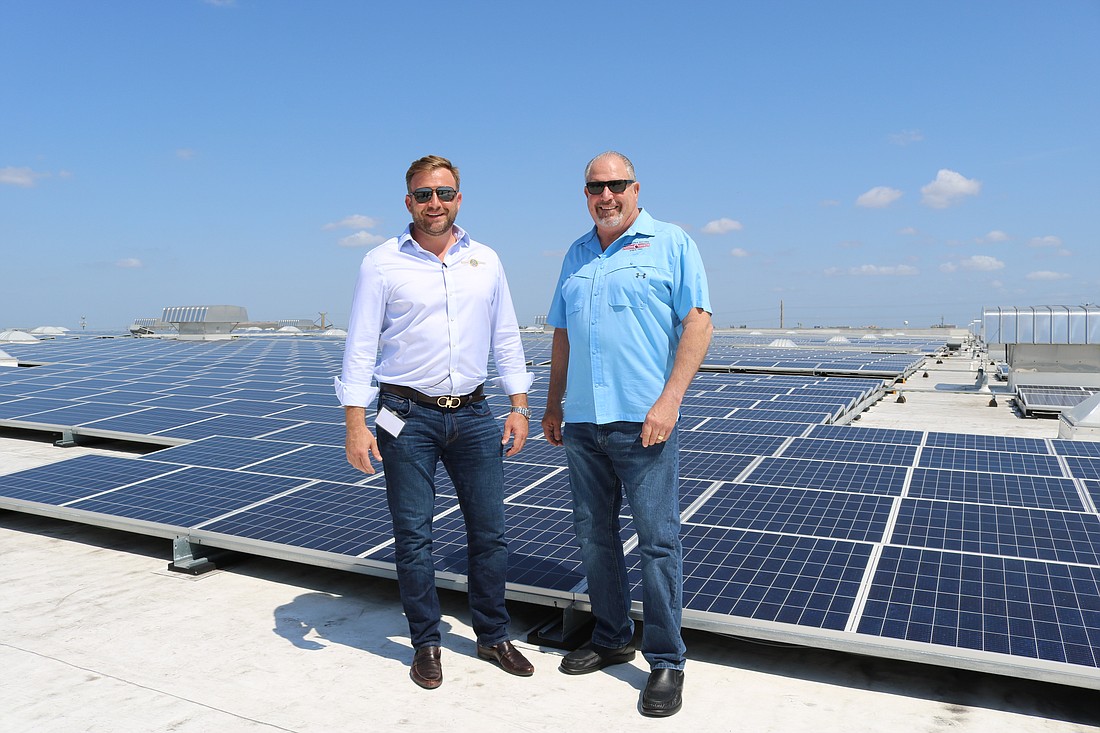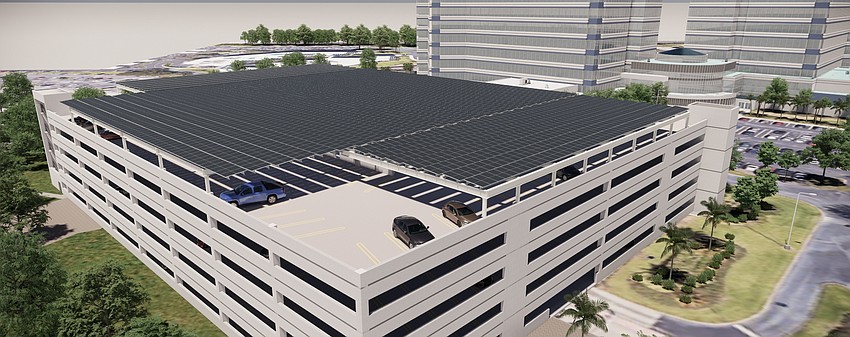- April 21, 2025
-
-
Loading

Loading

Solar power installations have been common in Florida’s residential real estate market for several years, but commercial uptake of the energy source has been slower to materialize.
That trend could change, however, as more big-name companies begin to realize the value of putting solar panel arrays in underutilized spaces such as the roofs of buildings and parking garages.
A prime example of the latter is Raymond James Financial in St. Petersburg. The finance powerhouse recently hired Fort Lauderdale-based Advanced Green Technologies, which has an office and warehouse in Tampa, to build two solar carports atop parking garages at the company’s headquarters in St. Pete’s Carillon Park business district. Collectively, the carports’ solar panels will deliver 1.7 megawatts of renewable electricity. (As a frame of reference, 1 megawatt is sufficient to power 164 U.S. homes.)
“It’s going to be a marquee solar project,” AGT Executive Vice President Clint Sockman says. “All of the power is being delivered from the garages back into the main facility, so approximately 10% of the the energy they use every year at that enormous campus, we’re going to be able to offset that with just these two parking garages.”
AGT, founded by Sockman in 2007, is part of a larger company, Advanced Roofing, that has more than 700 employees. Commercial and industrial (C&I) solar projects were sometimes a tough sell in the firm’s early days, he says, but momentum has been building. Just in the past couple of years, AGT has installed a 2.25-megawatt carport solar array at Lockheed Martin’s facility in Oldsmar, as well as a 3.7-megawatt project, completed in 2021, at JPMorgan Chase’s campus in Tampa’s Highland Manors neighborhood.
Lockheed Martin’s facility, Sockman says, “was the largest carport solar array in Florida for the longest time. Now our JPMorgan project is the largest but the Lockheed Martin project was the biggest flag that we had planted and really a breakthrough for solar in Florida.”
The surge of activity, though, leads to an essential question: Why have C&I solar power projects been slow to materialize compared to their residential counterparts?

Sockman has a three-part answer to that query. First, the cost of electricity in Florida has historically been much lower than other states, so there was less urgency to adopt solar power solutions; second, federal tax incentives have only recently begun to increase; and third, Florida, unlike several other states, even those with less sunshine, has never adopted a cohesive, state-mandated program to spur development of C&I solar projects.
Those factors, Sockman explains, are changing.
“Electricity costs are significantly higher than they were just three or four years ago,” he says, “and under the new Inflation Reduction Act, there's now a path to get a 40% tax credit by using manufactured goods from American suppliers.”
Prior to passage of the Inflation Reduction Act, the solar energy tax credit was 30%. The 10% increase is just one of the reasons Raymond James has sought its place in the sun. As solar-power technology has matured, construction costs have come down, making large installations more budget-friendly.
“To build solar 15 years ago, it was $8 per watt,” Sockman says. “Today, we're building under $2 per watt a lot. The model is starting to converge to a point where it makes financial sense and environmental sense — it doesn't just have to be a feel-good story. There's an economic case to be made.”
AGT expects to begin construction of Raymond James’ carport solar arrays by the end of January, with a projected completion date of December 2023.
“Hopefully sooner,” Sockman says. “We’re being conservative with those dates, but it is construction and so things do happen. Right now, we’re in an interesting time with all the supply-chain constraints in manufacturing.”
AGT, Sockman says, has designed the Raymond James project to withstand hurricane-force winds. It will be made of U.S.-manufactured steel, meeting the standard set by the Federal Investment Tax Credit (FITC) program.
Not only will the rooftop carport solar arrays cut electricity costs and reduce Raymond James’ impact on the environment, Sockman points out, but the structures will also shelter vehicles from Florida’s harsh sun and rain and increase the value of the property.
“People have been doing solar hot water heating for their pools in Florida for years, but there was not a lot going on with commercial solar when we started in 2007,” Sockman says. “So, it’s been fun to grow the company to where it is today … things are absolutely exploding.”